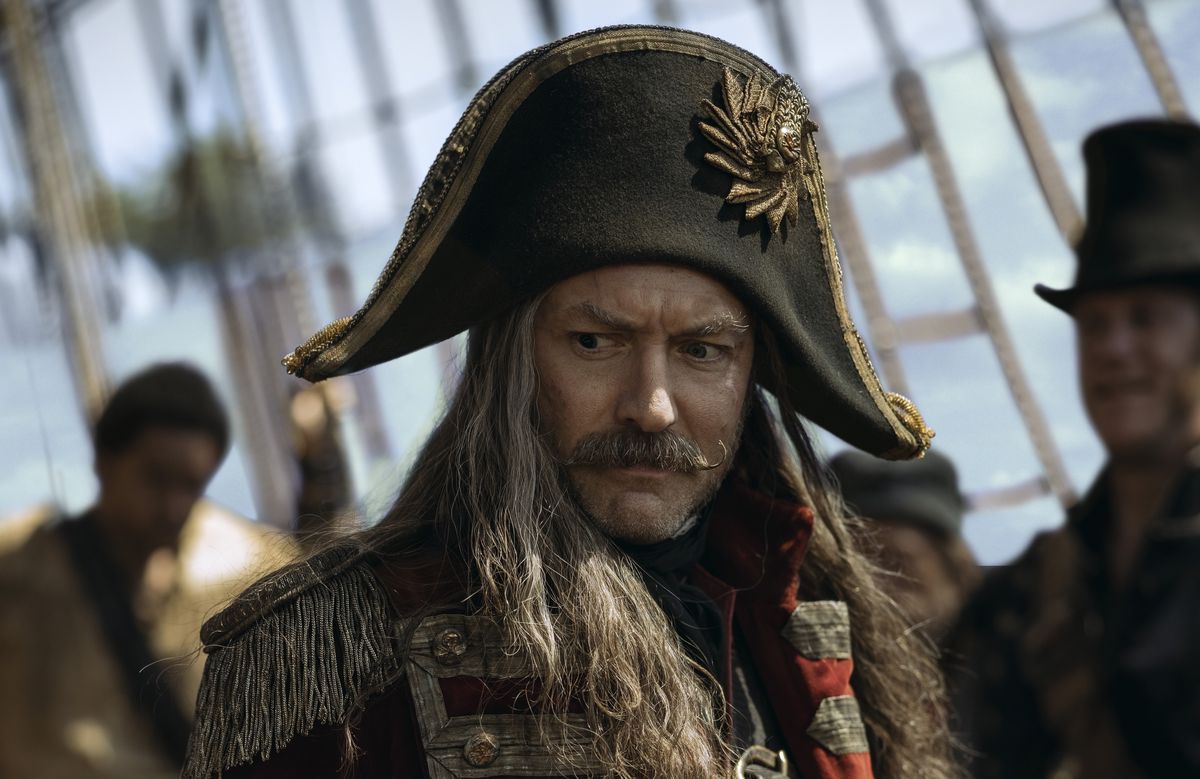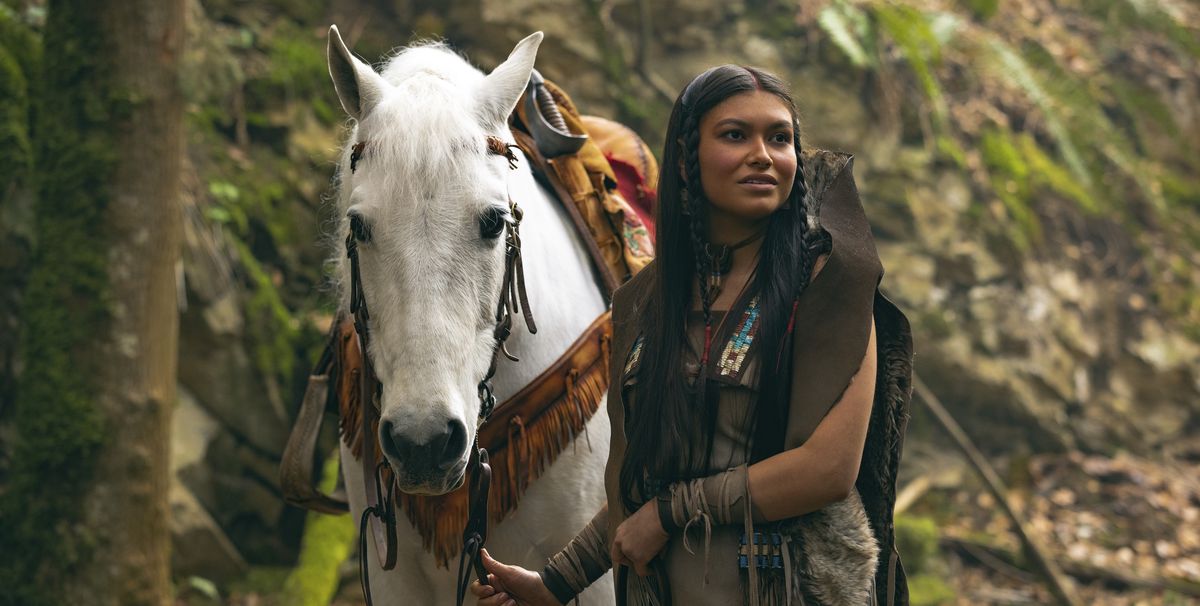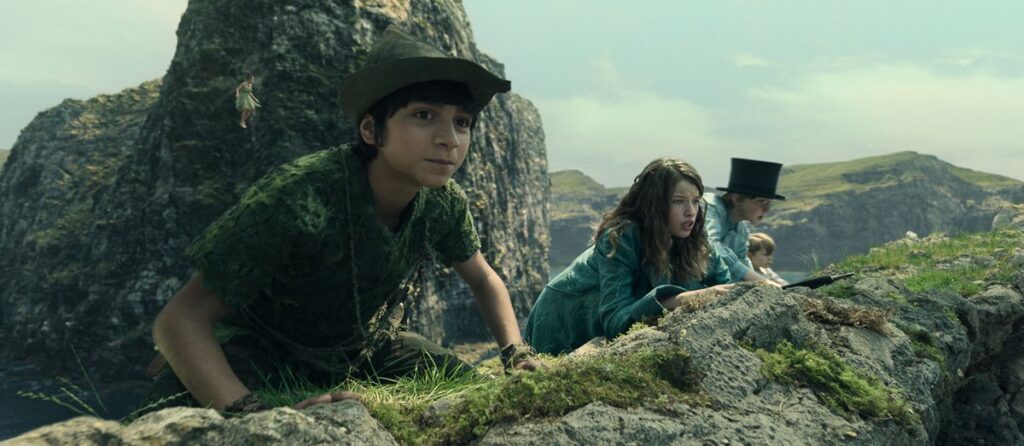Most live-action Disney remakes feel like perfunctory re-treads. The exceptions, which are few and far between, include Kenneth Branagh’s Cinderella, whose emphasis on kindness through adversity makes for a wonderful addition, and David Lowery’s Pete’s Dragon, which transforms the middling original into a tale that captures the wonder of childhood. Lowery also directed the straight-to-Disney-Plus feature Peter Pan & Wendy, the live-action remake of Disney’s animated 1953 Peter Pan, which makes a solid argument for its existence through its aesthetic approach.
When the first trailer arrived, the movie came under fire for its murky appearance, but that isn’t the whole story. This isn’t a film about retaining a love for childhood whimsy: Lowery’s remake is about conflicted feelings on growing up, and what it takes to face this inevitable step. The film’s alterations to the animated classic are admirable (though occasionally wobbly), with a renewed focus on its theme of children struggling with leaving childhood behind. Lowery not only returns to the original source material, J.M. Barrie’s 1904 play, to borrow a handful of minor plot points, but his thematic focus is also much more in line with Barrie’s than that of the Disney film.
Simply copying and pasting the 1953 movie’s wide-eyed approach to wonder would mean re-treading the ground Lowery already covered in his version of Pete’s Dragon, so instead, he attempts a closer examination of childhood fairy tales, filtering them through a lens that’s both nostalgic for Disney’s original movies and critical of their wistful musings. On paper, the result is one of the more meaningful departures from convention that Disney has seen in recent years. In execution, though, it falls ever so slightly short, though not for lack of originality.
The broad strokes of the story remain intact, from its opening scenes in Edwardian London, where a pair of young brothers, John (Joshua Pickering) and Michael Darling (Jacobi Jupe) engage in a make-believe pirate battle based on fantasy stories of Captain Hook and Peter Pan. Only this time, their older sister, Wendy Darling (Ever Anderson), eagerly joins the fun instead of performing household chores.
The film’s first overt departure is its conception of Wendy as a more boisterous, driven, yet frustrated character who harbors a desire for independence. Here, Wendy’s upcoming life change isn’t just leaving the nursery, as it was in the earlier versions of the story. Instead, she’s set to leave home altogether, as her parents, George (Alan Tudyk) and Mary (Molly Parker), prepare to ship her off to boarding school. Like her animated counterpart, she remains on the precipice of adulthood, but in a much more direct and unnerving way for a young tween, though the film never touches on George and Mary’s reasons for sending her away.
In the opening moments that establish these beats, Lowery and cinematographer Bojan Bazelli lay the foundation of how the movie will depict this underlying conflict through light and visual texture. A lengthy, snaking one-shot introduces the Darling family, first through old photographs around their home, then through the children’s energetic mischief. But the visual fabric remains dull and muted, while capturing the siblings through a wide lens that seems to expand their environment around them.
Photo: Disney
This approach ceases only briefly, when Wendy and her mother have a heart-to-heart chat about her fears of growing up, during which their close-up portraits are warmly lit. The contrast is simple, in the way it presents familial love as a source of life and reflection, a recurring visual motif. In the meantime, Lowery’s otherwise gloomy palette for the Darlings’ household not only fails to take into account Wendy’s attachment to her home — the visual warmth is isolated to specific personal interactions, even though she associates the house itself with childhood comforts.
The visual dimness also muddies subsequent whimsical events, like the arrival of Tinker Bell (Yara Shahidi) and Peter Pan (Alexander Molony). The former’s magical glow fails to counteract much of the dullness around her — the production design of the Darlings’ home is too dull to be eye-catching, even with Tinkerbell’s pixie shimmer added — so her arrival fails to feel like the joyous or hopeful spark it ought to. And when Peter tussles with his independently intelligent shadow, it’s barely visible as it traipses across the drab, dark green walls. Nothing pops, even when it’s supposed to.
The use of golden warmth as a visual metaphor sets the stage for a film where light and dark do constant battle, but darkness seems to inadvertently win, in spite of the way the story unfolds. When the impish Peter whisks Wendy and her brothers off to the ageless fantasy realm of Neverland, its lush green shores are lit with hints of dawn light — but the arrival of the villainous Hook (Jude Law) and his pirate crew brings dark and moody clouds. These are only occasionally pierced by rays of sunlight whenever Peter or some other heroic character, like one of the Lost Boys — usually Tiger Lily (Alyssa Wapanatâhk, in a role designed to be more culturally sensitive than her ’53 counterpart) — briefly saves the day.
Like the Darlings’ household, the deck of Hook’s pirate ship is similarly framed as an enormous, imposing space captured with wide lenses, especially when Wendy or any of the other children are taken hostage. The enormous deck is almost always populated by equally enormous pirates. Even in Neverland, the cruelty of the adult world follows the Darling siblings.

Photo: Eric Zachanowich/Disney
In these frightful moments, Peter instructs Wendy to concentrate on happy thoughts to access fairy powers — primarily flight, though the movie eventually takes some liberties with the idea. Those moments come via fleeting but powerful flashbacks, during which the film’s lighting palette finally bursts with glowing warmth and comfort. Wendy’s memories and fantasies of family are awash in daylight pouring in through windows, and since they’re still captured with wide lenses, Lowery’s approach to the adult world begins to subtly shift, taking on a less imposing tone. (That’s also thanks to a less crowded frame, or at least, one less crowded by cackling, cartoonish pirates.)
It’s all reminiscent of Terrence Malick’s frolicking, childlike lens in films like The Tree of Life. Rather than trapping Wendy between visions of childhood fantasy and adult cruelty, the film offers her contrasting versions of adulthood: one ruled by fear, and the other by love. That idea goes hand-in-hand with the film’s approach to its central theme, that growing up is inevitable, but the shape it takes — heroism or villainy — depends on how people grow up. (The script, credited to Lowery and his frequent film partner Toby Halbrooks, frequently hints at that sentiment, but seldom elaborates on it.)
This also leads to one of the film’s major story changes. Hook starts out a musically mischievous, moustache-twirling baddie — his every word and movement is accompanied by the jingling notes of Daniel Hart’s score, which evokes John Williams’ themes for Chris Columbus childhood classics like Home Alone and the first Harry Potter. But Lowery and Halbrooks imbue Hook with a tragic nuance, thanks to a deepening of his backstory that’s better left un-spoiled. It fits perfectly within the complicated nexus of Wendy’s contrasting desires, to both take independent charge of herself and to remain a daughter, a child with a mother and a family. These clashing visions of the future also take shape within Peter Pan, the imp whose promises of perpetual childhood are at the center of Lowery’s examination.
Lowery’s critique of the Peter Pan story gets emotionally raw — his Peter is just as conflicted as his Hook, with just as many unexpected layers. But the rest of the film never truly blossoms in its depictions of joyful possibilities.
There’s only one attractive outcome for the story, as far as Wendy visualizes it: She fantasizes about a happy home and future, filled with warmth, frolic, and family in the long term, even though she’s leaving childhood behind. But there’s little preventing her from realizing it, since these visions are already her go-to “happy thoughts” whenever she attempts to fly. This fantasy, which her mother spoke of, already lives in her mind as a vivid, abstract hybrid between warmth and wide angles, and no other vision of the future but this one ever enters her thoughts. Hypothetically, those images of her inner life, both real and imagined, bring together the best of both of the film’s worlds: the glow of sunlight harkened by Peter’s arrival, and the sheer enormity of adulthood, in all its possibilities.

Photo: Eric Zachanowich/Disney
But that imagined idea is so powerful in its conception that it supersedes anything in the film’s reality. No actual scenes ever play out with anything resembling the visual comfort of Wendy’s fantasies, even momentarily. Whatever childhood warmth Peter brings with him is fleeting, and he never presents Wendy with a worthwhile alternative to growing up. That flaw comes in part from Lowery hopping and skipping quickly between storylines, without much room for the characters to pause and reflect. Everything feels pre-ordained, and headed toward an eventuality where Wendy comes to a conclusion about her future without truly considering the alternatives.
Where both the 1953 original Peter Pan and even Lowery’s Pete’s Dragon featured adult characters recognizing some lost parts of themselves and reminiscing about childhood whimsy, Peter Pan & Wendy features a much dourer look into the past, courtesy of Law’s Captain Hook. The remake’s target audience is children, who aren’t likely to rationalize these individual artistic decisions. But they will be capable of picking up on the film’s overt musings about growing up being an inevitable part of life. (See also: the Toy Story films.)
Unfortunately, apart from its brief scenes of flying, the remake swings so far in the opposite direction of the original’s wistful nostalgia that it fails to present much of a childhood fantasy that might be attractive to children in the first place — whether as a matter of temptation for Wendy, or simply as scenes into which young viewers might be able to escape.
Peter Pan & Wendy does have some thrilling vistas — occasional shots of floating ships and characters leaping through the air at dawn, which would’ve made for an alluring big-screen experience had Disney decided to go that route — but even these flights of visual fantasy are rare. The film’s trailers drew concerns about its dark visual tone, but its key issue isn’t a lack of light. Rather, it’s the rarity with which light is deployed. Lowery has a keen understanding of how that light fits into this particular story — one which zeroes in on the mildly discomforting implications of a hero who refuses to grow up — but the sparing approach makes the options for warmth seem rarer, and the characters are flatter as a result.
Stepping into the adult world may seem grim, but the alternative — a perpetual arrested development — can be just as dour. Lowery’s new version sets out to offset that idea by exposing the unseen allure that a full life of adulthood may have to offer. But in spite of his numerous hints toward that refreshing take, the light of this particular promise remains mostly obscured.
Peter Pan & Wendy is streaming on Disney Plus now.

